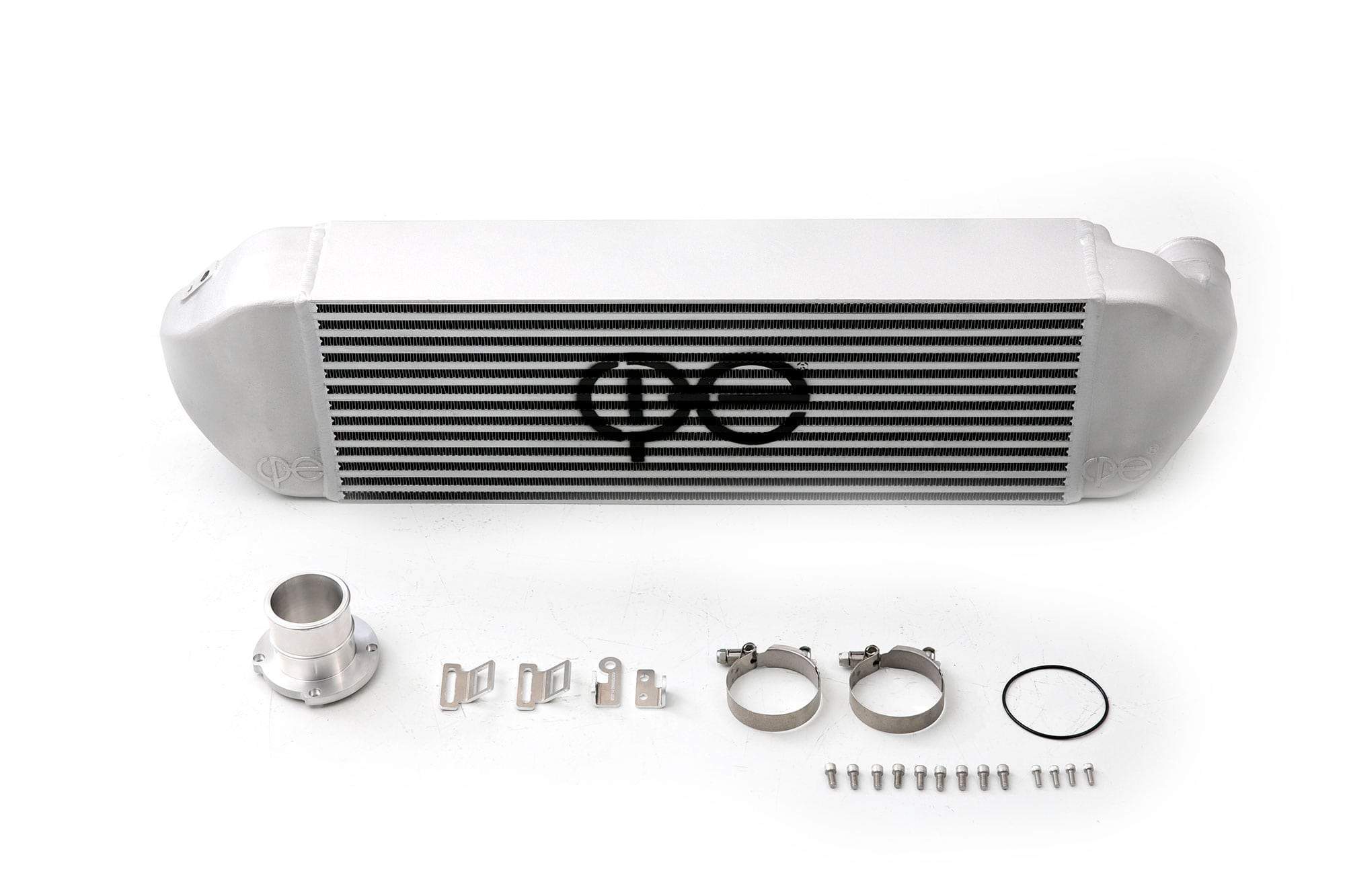
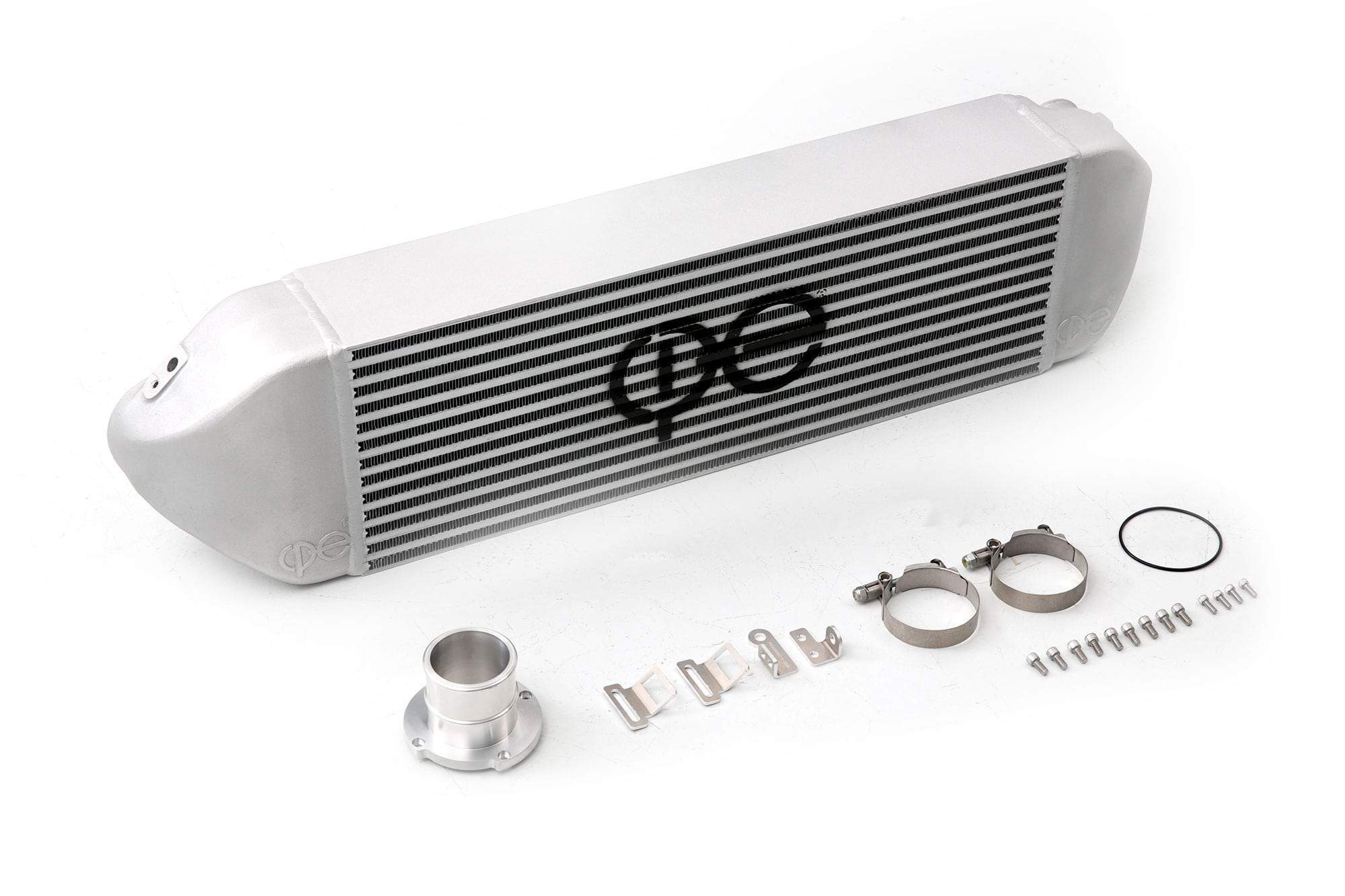
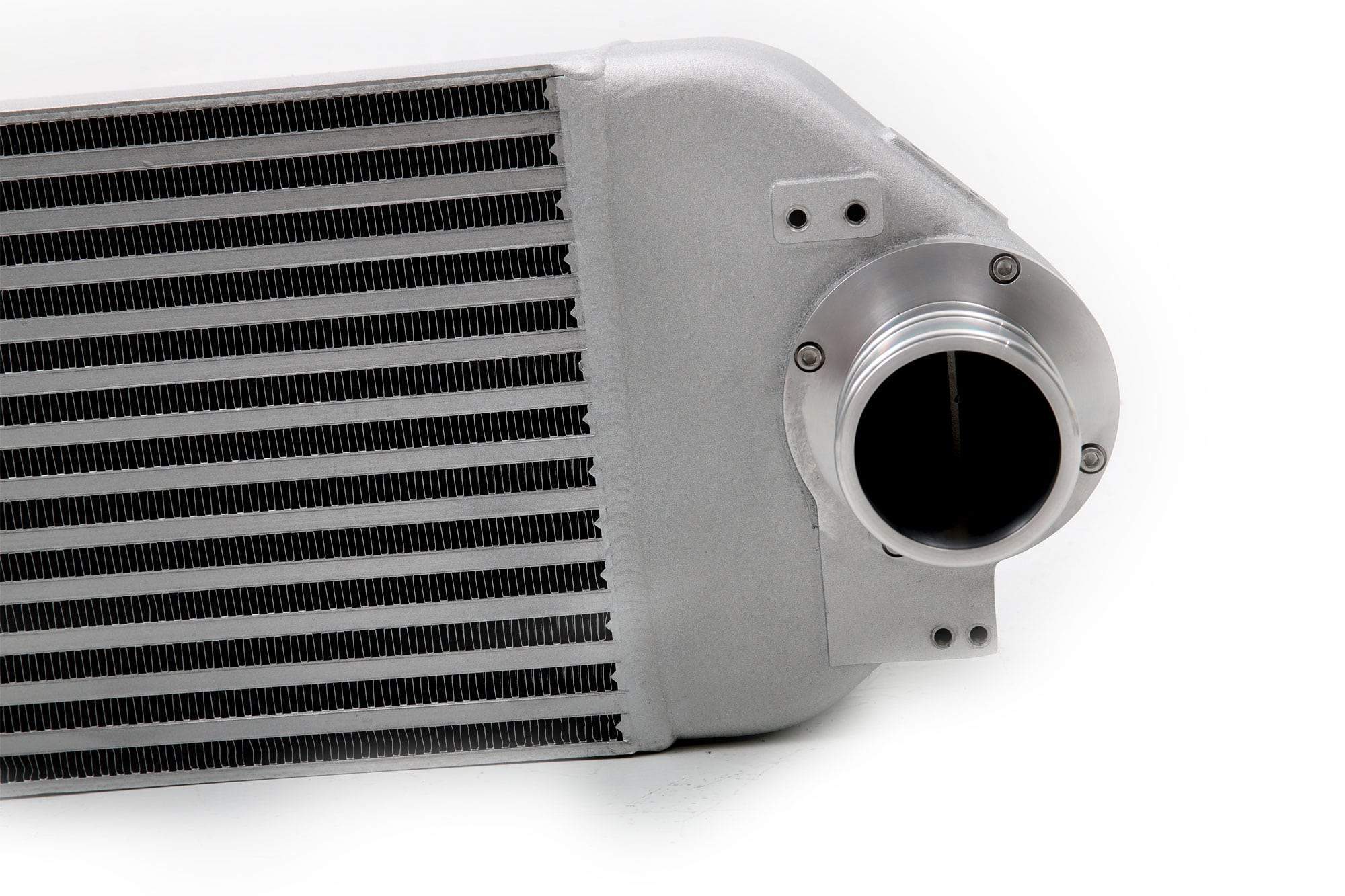
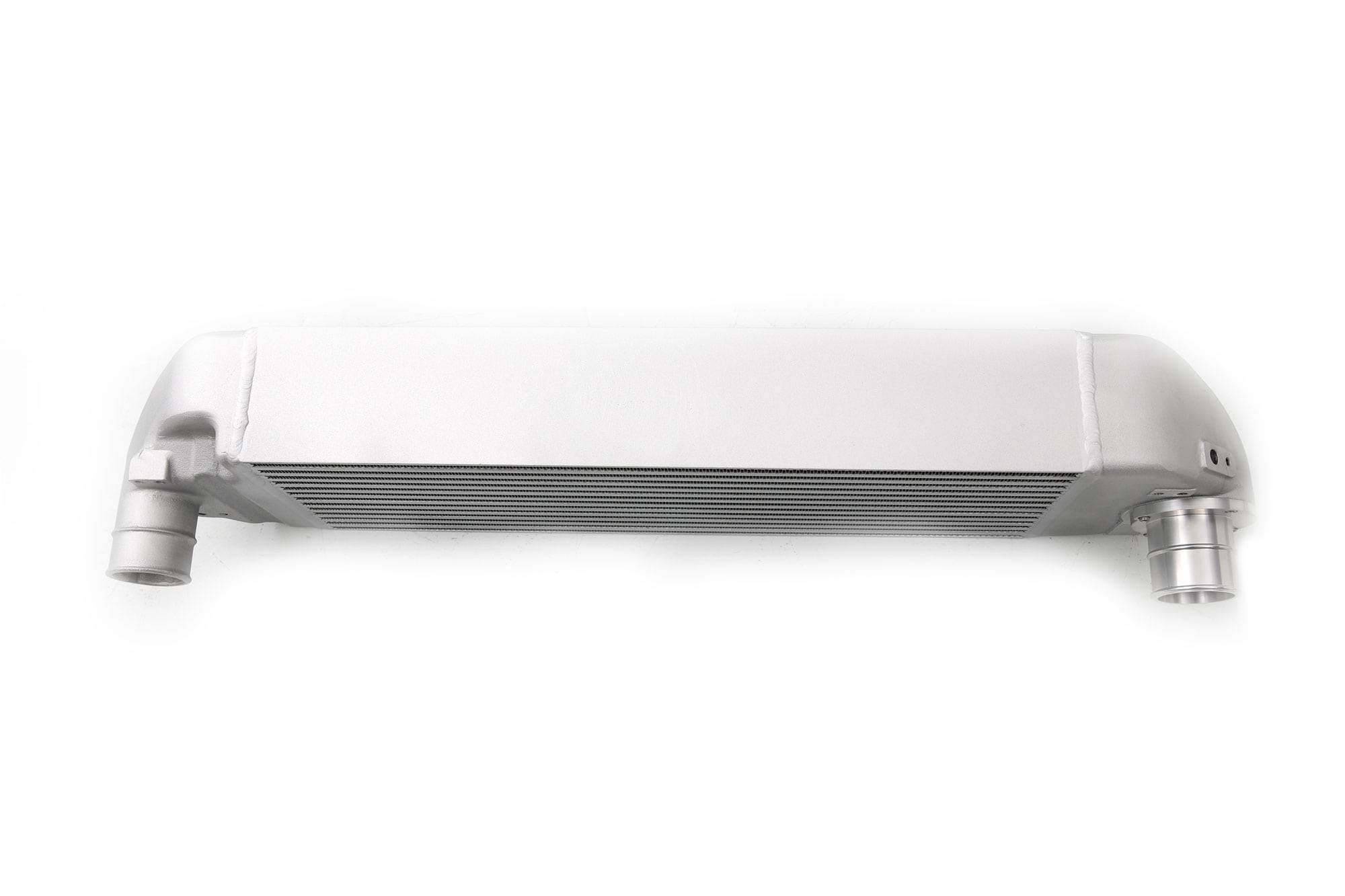
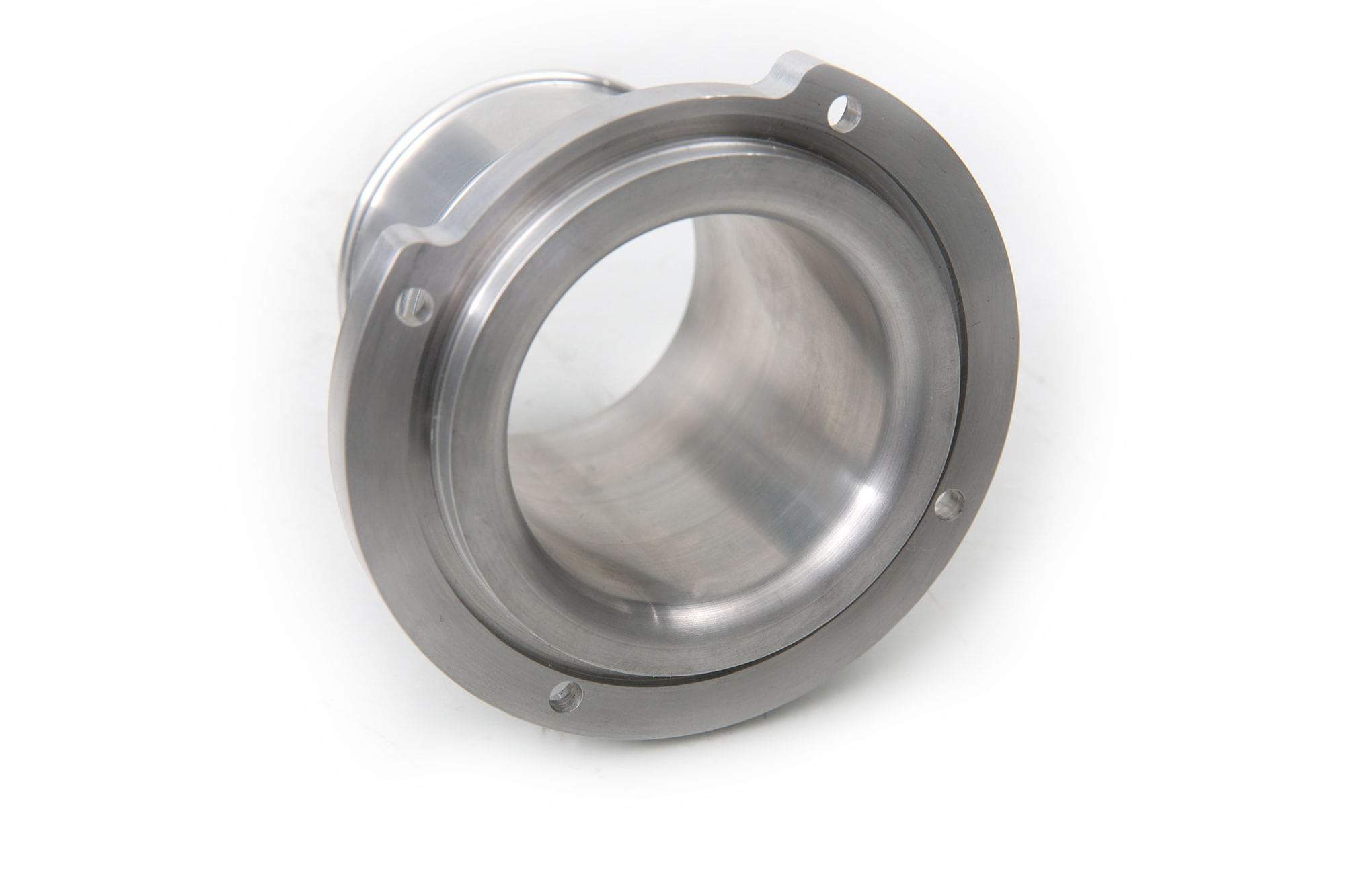
cp-e Core Ford Focus RS FMIC Front Mount Intercooler
The stock intercooler for the Ford Focus RS does an excellent job for the everyday driver that doesn't want to modify their car. However, once you find that itch to go faster, the intercooler is a must have modification.
Focus RS FMIC Features
- 28" x 7" x 3.5" Core Size (700mm x 175mm x 87.5mm)
- Low Turbulence End Tank Design
- Minimal Pressure Drop
- Maximized Core Design
- Substantially Lower & More Consistent Charge Temps
- Bolt-in Design, No Vehicle Modification Needed
- Fully Cast End-Tanks
cp-e started off by determining the maximum size core that could fit without major modification to the vehicle. Our Ford Focus RS FMIC uses the bar and plate design to help ensure a high level of efficiency.
cp-e then set their sights on designing the perfect Ford Focus RS FMIC endtanks, developing a design that not only encloses the monstrous core, but also requires no cutting, no drilling, and no permanent modification to the vehicle. With the laser cut brackets, the intercooler will mount in the stock location while matching up to the stock intercooler piping. Customers can now upgrade their piping when their power demands need it and modify in smaller increments.
As always, the cp-e intercooler includes cast end-tanks that are welded and pressure tested with the core. What sets these end-tanks from the rest is the engineering behind their shape and internal design. Hours of design and computer flow diagrams have been put into the tanks design to virtually eliminate turbulence within them. Many times, upgrading an intercooler causes increased turbo-lag, and an overall pressure loss. This is because of the large size of the core and the turbulence within the end-tanks. By designing the end-tanks to be smaller, and more efficient cp-e has found a way to minimize turbulence in order to keep the drivability of the car high, while still enlarging the intercooler drastically.
The internal design of the end-tanks directs the air to bring the most optimal airflow as well as an even distribution throughout the core. In intercoolers, the back half of the core only does 25% of the cooling. The end-tanks have been designed to direct the air properly into the core for the most even cooling, giving the vehicle the most consistent conditions going into the engine.
Ford Focus RS FMIC Highlights
Turbulence Reduction Fins
When creating an intercooler, the goal is to maximize size, while not increasing pressure drop. Larger cores almost always exhibit some form of pressure drop, due to the massive turbulence in a large core. cp-e has engineered a way around this by adding our carefully calculated turbulence reduction fins to smooth out the airflow from the end tanks to the main core.
In the real world this translates to extraordinarily low pressure drop and no loss in spool times.
Upgradeable Endtank Outlet
When we designed the Focus RS Core FMIC, we wanted this to be the last FMIC that you would need to buy for the platform. With this in mind, we made the outlet for the end tank on the cold side upgradeable. This means that whenever large power levels are hit, a bigger turbo is installed, or the most flow possible is needed, the entire core doesn't have to be replaced in order to gain a full 2.75 outlet from intercooler through our cold side charge pipe.
Keeping stock turbo customers in mind, we've supplied the FMIC with a 2.5" outlet that will work better for the stock turbo. But once the itch for a bigger turbo hits, rest assured that the FMIC can be upgraded simply.
Fully Optimized Core Size
In order to build one of the most efficient intercooler designs possible, cp-e set out to make the largest core available. To accomplish this, we've maximized every single square inch of usable space behind the bumper. This is evident in the core design with recesses for a perfect fit, yet largest size physically possible without permanent modification to the vehicle.
Warranty Info
Steeda offer a limited lifetime warranty for material and manufacturing defects.
The warranty is for the original purchaser.
WHAT IS NOT COVERED
The following items are not covered under the Limited Warranty:
1. Failure or damage resulting from normal wear and tear, improper installation, repair, abuse, misuse, neglect, negligence, accidents, corrosion, or the alteration or modification of a part by the customer.
2. Failure or damage caused by work not performed by Steeda.
3. Failure or damage caused by a defective part or accessory not installed by Steeda main dealer.
4. Labour for the removal from a vehicle and reinstallation of a part or component sold “over the counter” or “over the internet.”
5. Service adjustments, such as calibration or alignments.
6. Rust or corrosion to parts caused by environmental conditions such as, but not limited to, salt or other caustic chemicals is not covered by Steeda's warranty.
7. Pitting is caused by brake dust, chemical abuse, or lack of maintenance and is not covered by Steeda's warranty.
8. Incidental or consequential damages. Steeda is not responsible for any time for which you may lose the use of your vehicle, any inconvenience you might be caused, the loss of your transportation or any part thereof, or any other incidental or consequential damages you may have.
GPSR Product info
Importer: Steeda Europe (Performance Imports BV)
Contact:
Postal Address: Choorhoekseweg 8, 4424 NW, Wemeldinge, Netherlands
Email address: info@steeda.co.uk
Read more GPSR info here: Terms of service (section 21)
Choose options




